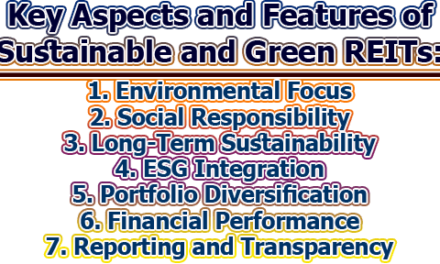A Comprehensive Guide on Investing in Rental Properties:
Investing in rental properties can be a lucrative venture that generates passive income and long-term wealth. However, it requires careful planning, research, and decision-making to ensure success. This guide aims to provide a comprehensive overview of the key steps involved in investing in rental properties. From setting investment goals to property selection, financing options, property management, and maximizing returns, this in-depth guide will equip you with the knowledge and tools necessary to navigate the world of rental property investment successfully.
1. Introduction:
1.1 Overview of Rental Property Investment: Investing in rental properties involves purchasing real estate properties with the intention of generating income through rental payments from tenants. It offers several advantages, such as potential cash flow, property appreciation, tax benefits, and diversification of investment portfolios. However, it also requires thorough research, financial planning, and active property management.
1.2 Benefits and Considerations: Before delving into rental property investment, it’s important to understand the potential benefits and considerations. Benefits include a consistent income stream, tax advantages like deductions and depreciation, leverage through mortgage financing, and potential long-term wealth accumulation. Considerations include initial costs, ongoing expenses (maintenance, vacancies), property management responsibilities, market fluctuations, and potential legal issues.
1.3 Defining Your Investment Goals: Clarifying your investment goals is crucial in determining your rental property investment strategy. Consider factors such as your desired income level, risk tolerance, investment timeline, and long-term objectives. Are you seeking regular cash flow, property appreciation, or a combination of both? Defining your goals will guide your decision-making process and help you align your investments with your financial objectives.
2. Research and Market Analysis
2.1 Understanding the Local Real Estate Market: Researching the local real estate market is fundamental to successful rental property investment. Analyze factors such as population growth, employment opportunities, infrastructure development, and local amenities. Identify areas with strong rental demand, low vacancy rates, and potential for property value appreciation. Utilize online real estate portals, government reports, and local market data to gather information.
2.2 Identifying Rental Property Demand and Supply: Assess the demand and supply dynamics of rental properties in your target market. Evaluate the rental rates and occupancy rates in different neighborhoods and property types. Determine the types of rental properties in demand, such as single-family homes, apartments, or vacation rentals. Consider factors like proximity to schools, transportation, and amenities that attract tenants.
2.3 Evaluating Economic Factors: The economic factors of a region greatly influence the rental property market. Analyze factors like job growth, unemployment rates, median income levels, and overall economic stability. Regions with strong economic fundamentals tend to have higher rental demand and potential for rent increases over time. Pay attention to industries driving the local economy, as well as any potential risks or vulnerabilities.
2.4 Assessing Rental Property Types: Different types of rental properties have varying benefits and considerations. Single-family homes offer stable rental demand and the potential for long-term appreciation. Multi-family properties can provide higher cash flow and economies of scale but may require more management. Vacation rentals offer short-term rental income but may be subject to seasonality and higher operating costs. Consider your goals, budget, and local market dynamics when selecting property types.
3. Financial Considerations:
3.1 Establishing an Investment Budget: Before investing in rental properties, it’s crucial to establish a realistic investment budget. Consider your available funds, potential financing options, and projected expenses. Calculate upfront costs such as down payments, closing costs, and property inspections. Create a comprehensive budget that covers ongoing expenses like mortgage payments, property taxes, insurance, maintenance, and property management fees.
3.2 Financing Options for Rental Properties: There are various financing options available for rental property investments. Traditional options include conventional mortgages, where you make a down payment (typically 20%) and secure a loan from a bank or mortgage lender. Government-backed loans, such as FHA or VA loans, offer lower down payment requirements but may have additional criteria. Private financing, partnerships, or real estate investment trusts (REITs) are alternative options worth considering.
3.3 Calculating Return on Investment (ROI): ROI is a crucial metric for evaluating the profitability of rental property investment. Calculate both cash-on-cash return and return on investment (ROI) to assess the potential financial gains. Cash-on-cash return compares the annual net cash flow generated by the property to the initial investment. ROI takes into account the property’s appreciation and cash flow over the investment period. Consider factors such as rental income, operating expenses, property management fees, taxes, and potential tax benefits to determine the ROI accurately.
3.4 Analyzing Cash Flow and Expenses: Cash flow analysis is essential in determining the financial viability of rental property investment. Estimate the potential rental income based on market rates and occupancy levels. Deduct operating expenses such as property taxes, insurance, maintenance and repairs, utilities, and property management fees. Factor in potential vacancies and unexpected expenses to ensure positive cash flow. Conduct a thorough analysis to ensure that the property’s income exceeds its expenses.
4. Property Selection:
4.1 Location Analysis and Neighborhood Evaluation: The location of a rental property plays a significant role in its success. Evaluate the neighborhood’s safety, proximity to amenities, schools, employment hubs, transportation options, and overall desirability. Look for areas with low crime rates, good school districts, and positive growth indicators. Consider the long-term potential for property appreciation in the chosen location.
4.2 Evaluating Property Condition and Potential: Thoroughly assess the condition of the property before making a purchase. Inspect the structure, electrical and plumbing systems, roofing, and overall maintenance. Identify any necessary repairs or renovations and factor in the associated costs. Consider properties that require minor cosmetic improvements or value-add opportunities to increase the property’s rental potential and value over time.
4.3 Identifying Target Tenant Profile: Understanding the target tenant profile helps in selecting the right property. Determine the demographics, preferences, and needs of the local rental market. For example, if the area has a large student population, investing in properties near universities or colleges might be ideal. Consider factors such as family-friendly features, accessibility for seniors, or amenities attractive to young professionals.
4.4 Determining Property Management Requirements: Decide whether to self-manage the rental property or hire a professional property management company. Self-management offers more control but requires time, effort, and knowledge of landlord-tenant laws. Property management companies handle tenant screening, rent collection, property maintenance, and other tasks for a fee. Assess your availability, expertise, and willingness to handle property management responsibilities when making this decision.
5. Property Financing:
5.1 Mortgage Loans and Lenders: Research various mortgage lenders to find the most suitable financing options for your rental property investment. Compare interest rates, loan terms, down payment requirements, and eligibility criteria. Provide the necessary documentation, including income verification, credit history, and property information, to initiate the loan application process. Work closely with lenders to secure the best financing terms for your investment.
5.2 Loan Pre-Approval Process: Obtaining a pre-approval for a mortgage loan is recommended before searching for properties. Pre-approval provides a clear understanding of your budget and strengthens your position as a buyer. Submit the required documents to the lender, such as income statements, tax returns, and credit reports. The lender will assess your financial situation and provide a pre-approval letter, which demonstrates your credibility as a buyer.
5.3 Down Payment Considerations: Consider the down payment requirements for rental property financing. Typically, a higher down payment, such as 20% of the property’s purchase price, is required for investment properties compared to primary residences. A larger down payment reduces the loan amount and can potentially result in lower interest rates and monthly mortgage payments. Plan your finances accordingly to ensure you have the necessary funds available.
5.4 Debt-to-Income Ratio (DTI) and Credit Score: Lenders evaluate your debt-to-income ratio (DTI) and credit score when considering your eligibility for a rental property loan. DTI represents the percentage of your monthly debt payments relative to your income. Aim for a low DTI to demonstrate your ability to manage mortgage payments alongside other financial obligations. Additionally, maintain a good credit score by paying bills on time, minimizing credit card debt, and addressing any errors on your credit report. A higher credit score enhances your chances of securing favorable loan terms.
5.5 Exploring Other Financing Options: Apart from traditional mortgage loans, consider alternative financing options. These may include seller financing, where the property seller acts as the lender or private lending from individuals or investment groups. Hard money loans, which are short-term loans based on the property’s value rather than the borrower’s credit, can also be an option for investors with lower credit scores. Explore these options to diversify your financing strategies.
6. Purchase and Acquisition:
6.1 Making Offers and Negotiating Prices: Once you identify a suitable rental property, make an offer based on thorough market research and property evaluation. Consider comparable property prices, market conditions, and the seller’s motivations. Negotiate the price and terms to secure a favorable deal. Work with a real estate agent or attorney who specializes in investment properties to guide you through the negotiation process and ensure a fair agreement.
6.2 Conducting Property Inspections: Schedule professional property inspections to assess its condition thoroughly. Hire a qualified inspector to evaluate the structural integrity, electrical systems, plumbing, and overall safety of the property. Inspections may also identify potential issues that could impact the property’s value or require immediate repairs. Use the inspection report to negotiate repairs or adjust the purchase price accordingly.
6.3 Due Diligence and Title Research: Perform due diligence to verify the property’s legal and financial aspects. Conduct a title search to ensure there are no outstanding liens or legal encumbrances. Review the property’s history, including past sales, ownership disputes, and any pending legal matters. Engage a real estate attorney to review contracts, title documents, and other legal aspects to protect your interests throughout the purchase process.
6.4 Escrow and Closing Process: Once you finalize the purchase agreement, the property goes into escrow, a neutral third-party holding period during the transaction. During this time, complete any remaining contingencies, such as securing financing, obtaining insurance, and finalizing property inspections. Coordinate with the escrow agent, lender, and relevant parties to ensure a smooth closing process. Once all requirements are met, the property ownership is transferred, and you become the new owner.
7. Property Management:
7.1 Self-Management vs. Hiring a Property Manager: Decide whether to manage the rental property yourself or hire a professional property management company. Self-management offers more control over property-related decisions but requires significant time, effort, and knowledge of landlord-tenant laws. Hiring a property manager relieves you of day-to-day responsibilities but comes with additional costs. Consider your availability, expertise, and willingness to handle property management tasks when making this decision.
7.2 Tenant Screening and Lease Agreements: Screening potential tenants is crucial to secure reliable and responsible occupants for your rental property. Implement a thorough screening process that includes background checks, credit checks, employment verification, and rental history analysis. Use standardized lease agreements that comply with local regulations and include essential terms and conditions, such as rent amount, lease duration, and tenant responsibilities. Consult legal professionals to ensure compliance with local landlord-tenant laws.
7.3 Property Maintenance and Repairs: Maintaining the rental property is essential to attract and retain tenants and protect its long-term value. Develop a proactive maintenance plan that includes regular inspections, routine repairs, and addressing tenant-reported issues promptly. Keep the property in good condition, address safety concerns, and ensure compliance with local health and safety codes. Establish relationships with reliable contractors and service providers for any necessary repairs or maintenance tasks. Promptly respond to tenant requests and maintain open lines of communication to foster positive tenant relationships.
7.4 Rent Collection and Financial Management: Establish a streamlined rent collection process to ensure timely payments from tenants. Clearly communicate rent payment methods, due dates, and consequences for late payments. Utilize online platforms or property management software to facilitate rent collection and track financial transactions. Maintain accurate financial records, including rental income, expenses, and tax-related documents. Regularly review the property’s financial performance and make necessary adjustments to optimize profitability.
7.5 Tenant Relations and Conflict Resolution: Maintaining positive tenant relations is essential for long-term success in rental property investment. Foster open communication and promptly address tenant concerns or complaints. Establish clear guidelines for tenant responsibilities and property rules to minimize conflicts. Implement fair and consistent policies for lease renewals, rent increases, and eviction processes, ensuring compliance with local laws and regulations. Resolving conflicts professionally and promptly contributes to tenant satisfaction and reduces tenant turnover.
8. Maximizing Returns and Scaling:
8.1 Regular Property Performance Evaluation: Regularly evaluate the performance of your rental property to identify areas for improvement and maximize returns. Assess key metrics such as vacancy rates, rental income, operating expenses, and maintenance costs. Analyze market trends and make necessary adjustments to rent rates to stay competitive. Continuously monitor the property’s financial performance to identify opportunities for cost savings and income growth.
8.2 Property Value Appreciation and Equity Building: Monitor the property’s value appreciation over time and leverage it to build equity. Stay informed about market conditions and make strategic improvements to enhance the property’s value. Renovations, upgrades, or expansion of rental units can increase rental rates and attract higher-quality tenants. Regularly assess the property’s market value and consider refinancing options to access equity for future investments or property improvements.
8.3 Scaling Your Rental Property Portfolio: Once you gain experience and success with your initial rental property investment, consider scaling your portfolio. Assess your financial capacity, risk tolerance, and market conditions to determine if expanding your portfolio is viable. Conduct thorough research and market analysis for additional investment opportunities. Leverage your existing equity, cash flow, and relationships with lenders to acquire additional rental properties and diversify your investment portfolio.
8.4 Tax Planning and Optimization: Understand the tax implications of rental property investment and develop effective tax planning strategies. Consult with a tax professional to take advantage of tax deductions, depreciation benefits, and other tax incentives specific to rental property investments. Properly document and track all income and expenses related to the property to ensure accurate tax reporting. Comply with tax regulations and stay updated on any changes that may impact rental property taxation.
In conclusion, investing in rental properties can be a profitable venture with proper planning, research, and diligent property management. This comprehensive guide has provided an in-depth overview of the key steps involved in rental property investment, including setting investment goals, conducting market research, financial considerations, property selection, financing options, property management, and maximizing returns. Remember to continuously educate yourself, adapt to market conditions, and stay informed about local regulations to navigate the rental property market successfully and achieve long-term financial success.

Assistant Teacher at Zinzira Pir Mohammad Pilot School and College










